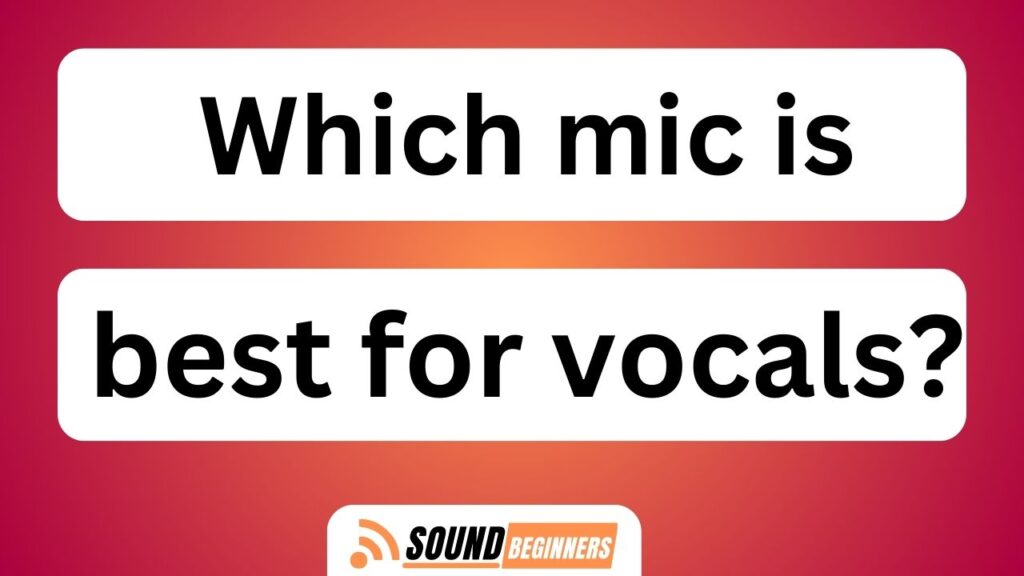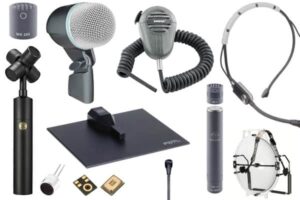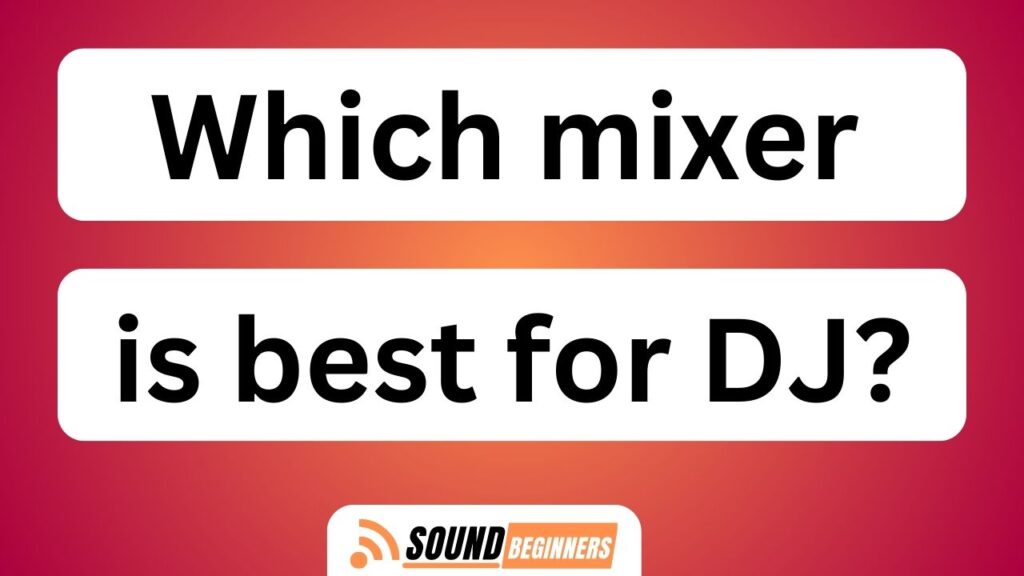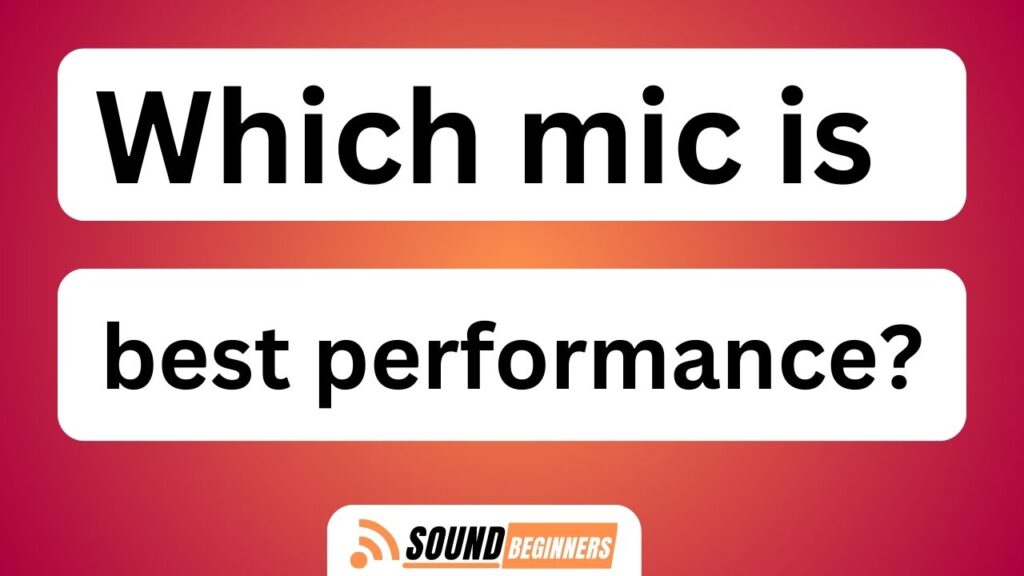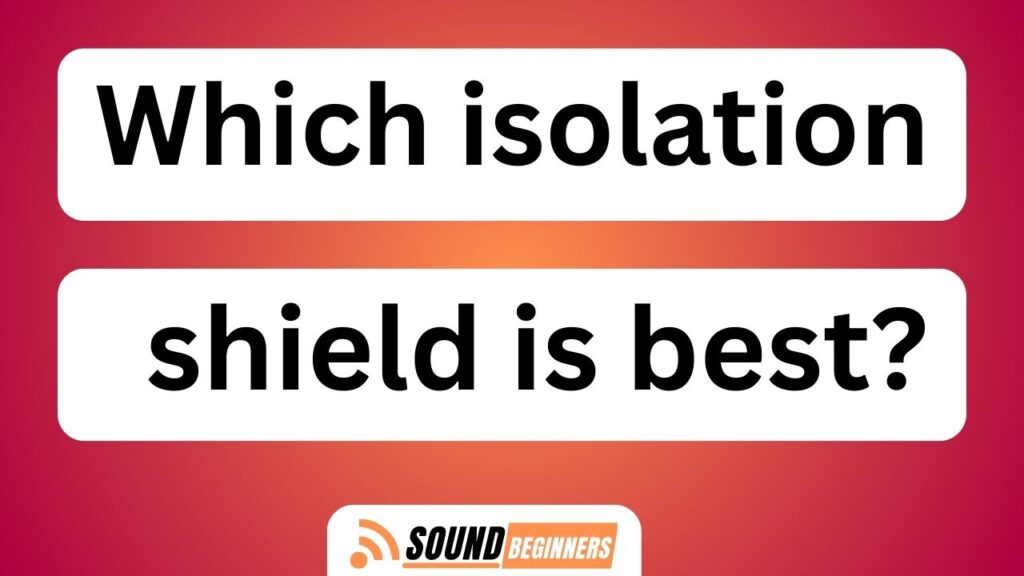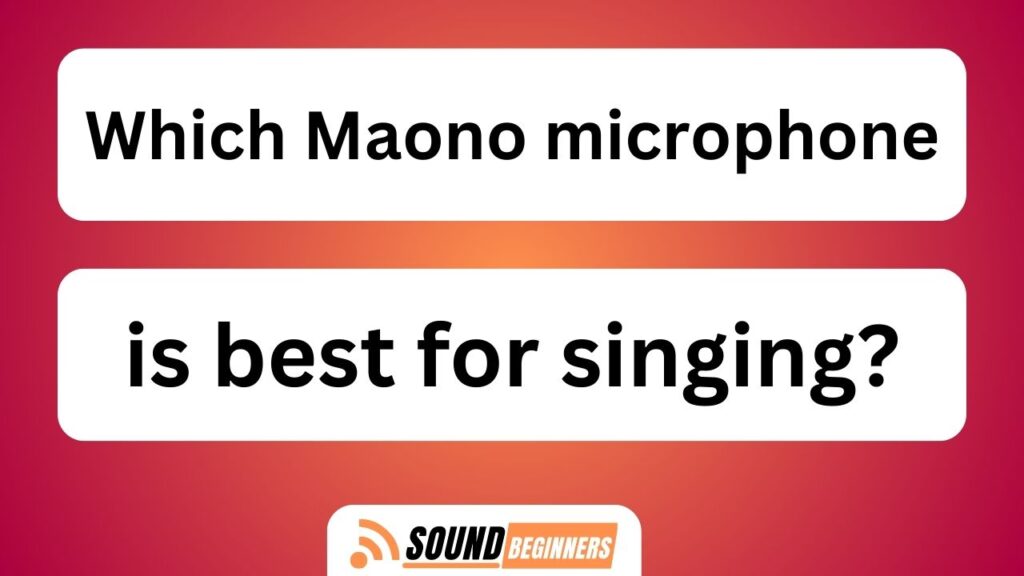Imagine standing on a stage, bathed in a spotlight, ready to captivate your audience with your powerful vocals. The anticipation hangs in the air as you take a deep breath and prepare to let your voice soar. But what if the microphone you’re holding doesn’t do justice to your talent?
To truly shine, you need the right tool for the job – the perfect microphone for vocals. Selecting the ideal mic can be a daunting task, considering the vast array of options available. However, fear not! This article will guide you through the process of finding that magical microphone that complements and enhances your unique vocal style.
From understanding different types of microphones to considering budget and polar patterns, we’ll cover it all. So get ready to explore this technical world of sound reproduction and find that perfect match for your extraordinary voice.
Let’s dive in!
Key Takeaways Which Mic Is Best For Vocals?
- Understanding the different types of microphones and their placement is crucial for achieving optimal sound quality in vocal recordings.
- Consider the vocal style, genre, and room acoustics when selecting the ideal microphone for vocals.
- Factors such as frequency response, SPL handling, and built-in pop filters should be considered when comparing and choosing a microphone.
- Trusting personal preference and experimenting with different microphones is important in finding the best fit to enhance individuality and create a unique sound.
Understanding the Different Types of Microphones
Now let’s dive into the world of microphones and discover which one is perfect for capturing your powerful vocals. When it comes to choosing the best microphone for vocals, understanding the different types available is crucial.
One important factor to consider is microphone placement. The position of the microphone in relation to the vocalist can greatly affect the sound quality and overall performance.
Additionally, room acoustics play a significant role in microphone selection. Different rooms have varying levels of reverb and background noise, which can interfere with vocal recordings. It’s essential to choose a microphone that can handle these acoustic challenges effectively.
As we move forward into considering your vocal style and genre, keep in mind that finding the perfect mic involves careful consideration of these technical aspects as well as personal preferences and artistic goals.
Consider Your Vocal Style and Genre
Considering your vocal style and genre, it’s crucial to find a mic that captures the essence of your performance. Vocal techniques and musical influences play a significant role in determining which microphone is best suited for your needs.
Different microphones excel at capturing specific vocal styles, such as dynamic mics for energetic performances or condenser mics for delicate vocals with intricate nuances. Additionally, the genre you perform in can influence your choice of microphone as well.
For example, if you’re a rock vocalist who belts out powerful screams, a dynamic mic with high SPL handling would be ideal. On the other hand, if you’re an opera singer aiming for pristine clarity and detail, a large-diaphragm condenser mic may be more suitable.
Once you’ve considered these factors, it’s time to determine your budget and find a microphone that meets both your sonic requirements and financial constraints.
Determine Your Budget
Once you’ve figured out your vocal style and genre, it’s time to set a budget for finding the perfect microphone. Setting realistic expectations is crucial in order to find a microphone that meets your needs without breaking the bank.
It’s important to research different microphone brands and models within your price range to ensure you get the best quality for your money. Keep in mind that higher priced microphones often offer better sound quality and durability, but there are also affordable options available that can still deliver great results.
Reading reviews and seeking recommendations from professionals or experienced users can help narrow down your choices. By researching microphone brands and understanding their features, you can make an informed decision based on your budget and requirements.
Transitioning into the next section, considering the polar pattern of a microphone is another important factor to take into account.
Consider the Polar Pattern
First, imagine yourself as a conductor leading an orchestra, with your voice as the solo instrument. Mic placement and room acoustics play a crucial role in capturing the best vocal performance. To achieve optimal results, consider the polar pattern of the microphone you choose.
A cardioid polar pattern is commonly recommended for vocals as it captures sound from the front while minimizing background noise and feedback. Additionally, it allows for better control over proximity effect – the increase in bass response when closer to the microphone.
Experiment with different mic placements to find the sweet spot that suits your voice and musical style. It’s also essential to consider room acoustics when recording vocals. Look for a well-treated space or use acoustic panels to reduce reflections and unwanted reverberation.
With these considerations in mind, let’s now explore some key microphone features that contribute to outstanding vocal recordings.
Look for Microphone Features
When considering microphone features for vocals, there are three key points to look for.
First, the frequency response of a microphone is important as it determines the range and accuracy of the sound it can capture.
Second, SPL handling refers to how well a microphone can handle high sound pressure levels without distortion.
Lastly, built-in pop filters are beneficial as they help reduce plosive sounds caused by bursts of air hitting the microphone during vocal performances.
Frequency Response
Choose a mic with a frequency response that’ll make your vocals sound stunning and give you chills every time you sing.
Here are four key considerations when it comes to frequency response:
- Importance of microphone placement: The position of the microphone relative to the vocalist can significantly affect the captured sound. Experimenting with different placements can help achieve the desired tonal quality.
- The impact of room acoustics on vocal recordings: The characteristics of the room, such as its size, shape, and materials used, can influence how vocals are picked up by the microphone. Understanding these factors is crucial for achieving optimal recording results.
- Frequency range: Look for a microphone that has a wide frequency range to capture both low and high-end details in your vocals. This’ll ensure clarity and fidelity in your recordings.
- Presence peak: A presence peak in a microphone’s frequency response can enhance vocal intelligibility and bring out certain frequencies that make vocals stand out in a mix.
Considering these factors will help you choose a mic with an ideal frequency response for capturing stunning vocal performances.
In the next section, we’ll delve into SPL handling to make sure your mic can handle high sound pressure levels without distortion or damage.
SPL Handling
After understanding the concept of frequency response, it’s crucial to delve into another important aspect of choosing the best microphone for vocals: SPL handling.
SPL stands for Sound Pressure Level, which refers to the maximum volume a microphone can handle without distorting the sound. This characteristic is particularly significant when recording powerful vocal performances or instruments with high dynamic range.
Proper microphone placement plays a vital role in achieving optimal SPL handling. Positioning the mic at an appropriate distance from the source and angling it correctly can help prevent overload and maintain clarity in recordings. Additionally, reducing handling noise is essential during vocal recordings. Tips include using shock mounts or suspension systems to isolate the mic from vibrations caused by hand movements or table contact.
As we move on to discuss built-in pop filters in the subsequent section, it’s important to understand how these features contribute to enhancing vocal recordings.
Built-in Pop Filters
One effective way to enhance your vocal recordings is by using a microphone with a built-in pop filter. Built-in pop filters are designed to reduce plosive sounds caused by strong bursts of air hitting the microphone diaphragm, resulting in clearer and more balanced vocals. The advantages of using a built-in pop filter include convenience, as it eliminates the need for an external pop filter and reduces setup time. Additionally, they provide consistent performance as the filter is specifically tailored to work with the microphone’s design.
However, there are some disadvantages to consider when using built-in pop filters. They may not be as effective as standalone filters in reducing plosives from close proximity singing or speaking. In such scenarios, alternative solutions like foam windscreens can be used alongside the built-in filter for better results.
To further enhance your microphone selection process, it’s recommended to read reviews and seek recommendations from experienced professionals in order to find the best mic for your specific vocal needs.
Read Reviews and Seek Recommendations
When it comes to finding the best mic for vocals, you’ll want to read reviews and seek recommendations from experienced musicians and audio professionals. This will help you make an informed decision and ensure that you choose a microphone that meets your specific needs.
Here are three reasons why reading reviews and seeking recommendations is beneficial:
- Expert opinions: Reviews and recommendations from experienced individuals in the field can provide valuable insights into the performance, durability, and overall quality of a microphone.
- User experiences: Reading reviews allows you to gain an understanding of how different microphones perform in real-world scenarios. You can learn about any potential drawbacks or limitations that may not be apparent from technical specifications alone.
- Comparison shopping: By reading multiple reviews and seeking recommendations, you can compare different microphone models side by side, considering factors such as sound quality, price range, and features.
By taking these steps to gather information about various microphones, you can then proceed to test and compare them before making your final decision.
Test and Compare Microphones
To truly find the microphone that captures your unique voice and brings it to life, step into the studio and immerse yourself in the experience of testing and comparing different mic options. Mic placement and recording techniques play a crucial role in achieving optimal sound quality. By experimenting with various positions and distances from the mic, you can discover which setup complements your vocal style best. Additionally, consider factors like polar patterns, frequency response, and sensitivity when comparing microphones. To help you visualize the differences between different models, here is a table highlighting key features:
| Microphone Model | Polar Pattern | Frequency Response | Sensitivity |
|---|---|---|---|
| Model A | Cardioid | 20Hz-20kHz | -42dB |
| Model B | Supercardioid | 30Hz-18kHz | -35dB |
| Model C | Omni | 40Hz-16kHz | -38dB |
| Model D | Figure-8 | 25Hz-22kHz | -40dB |
| Model E | Cardioid | 50Hz-15kHz | -37dB |
By carefully examining these specifications and conducting thorough tests, you can make an informed decision about which microphone suits your vocals best. Next, let’s consider additional equipment and accessories that can enhance your recording process without skipping a beat.
Consider Additional Equipment and Accessories
Explore the world of audio accessories and equipment that can take your recording process to the next level, allowing you to create professional-quality soundscapes effortlessly. To optimize vocal recordings, it’s crucial to consider additional equipment and accessories. Here are five essential items:
- Pop Filter: This accessory helps reduce plosive sounds caused by consonants like ‘p’ and ‘b,’ resulting in cleaner vocals.
- Shock Mount: It minimizes vibrations and handling noise, ensuring a clear recording free from unwanted disturbances.
- Reflection Filter: This device absorbs excess room reflections, improving the overall quality of vocal recordings.
- Vocal Booth: Ideal for creating an acoustically controlled environment, reducing external noises and enhancing vocal clarity.
- Mic Stand: Choosing the right microphone stand is vital for proper mic placement. Consider factors such as stability, adjustability, and ease of use.
To achieve optimal results, seek professional advice on selecting suitable equipment tailored to your specific needs without compromising sound quality.
Seek Professional Advice
For the best results, don’t hesitate to consult with a professional who can provide you with valuable advice tailored to your specific needs. Seeking professional opinions when it comes to choosing the best microphone for vocals is highly recommended.
Professionals in the audio industry have extensive knowledge and experience that can help you make an informed decision. They can guide you through the various options available and recommend a microphone that suits your vocal style, recording environment, and budget.
Additionally, visiting a professional studio has its benefits. These studios are equipped with high-quality microphones and acoustically treated rooms, ensuring optimal sound quality during recording sessions. The expertise of professionals combined with top-notch equipment can greatly enhance the overall outcome of your vocal recordings.
Trusting their guidance will lead you in the right direction when it comes to selecting the ideal microphone for your vocals.
As we move on to discussing ‘trust your ears and personal preference,’ it is important to consider…
Trust Your Ears and Personal Preference
Seeking professional advice is crucial when it comes to choosing the best microphone for vocals. However, once armed with knowledge and guidance, it’s important to trust your own ears and personal preference. Ultimately, finding the right microphone for your vocals involves trusting your instincts and honing in on your unique sound.
Every vocalist has a distinct tone and style that sets them apart from others. By relying on their own ears, singers can determine which mic complements their voice the best. It’s essential to consider factors such as frequency response, sensitivity, and polar pattern while making this decision.
Trusting one’s instincts also means experimenting with different microphones to find the perfect fit. Each vocalist has specific requirements based on their vocal range, projection, and desired sound. Therefore, it’s crucial to listen carefully during testing sessions and choose the microphone that captures the essence of their voice.
Seeking professional advice provides a solid foundation for selecting a microphone; however, trusting one’s ears and personal preferences is key in finding a mic that enhances individuality and helps create a unique sound.
Frequently Asked Questions
How do I choose the right microphone for live performances?
When choosing the right microphone for live performances, one should consider budget-friendly options and whether to go with wireless or wired options. The decision should be based on personal preferences, performance needs, and venue requirements.
What should I consider when recording vocals in a home studio?
When recording vocals in a home studio, it’s crucial to choose the right environment. Proper soundproofing and acoustics can greatly enhance the quality of recordings. Additionally, employing techniques such as proper microphone placement and vocal warm-ups can ensure optimal vocal performance.
Are there any specific microphones recommended for recording rap vocals?
When recording rap vocals, it is recommended to use dynamic microphones due to their ability to handle high sound pressure levels. To achieve optimal results, employ proper recording techniques such as proximity effect and utilizing pop filters.
How can I determine if a microphone is suitable for my voice type?
Determining microphone suitability for a specific voice type involves considering factors such as frequency response, polar pattern, and dynamic range. By evaluating these characteristics, one can ensure optimal compatibility between the microphone and the vocalist’s unique vocal qualities.
Are there any microphones that are commonly used by professional singers?
Professional singers commonly use dynamic and condenser microphones for vocals. They often prefer wired microphones for their reliability and consistent performance. Wireless options are also available, providing freedom of movement on stage while maintaining high-quality sound reproduction.
Conclusion
In conclusion, choosing the best microphone for vocals requires careful consideration of various factors. By understanding the different types of microphones and considering your vocal style and genre, you can narrow down your options.
Determining your budget and considering the polar pattern are crucial steps in finding the perfect mic. Additionally, looking for microphone features, testing and comparing options, and seeking professional advice can greatly assist in making an informed decision.
Ultimately, trust your ears and personal preference to ensure that the chosen microphone suits your needs precisely.
